Masonry, like all the Religions, all the Mysteries, Hermeticism and Alchemy, conceals its secrets from all except the Adepts and Sages, or the Elect, and uses false explanations and misinterpretations of its symbols to mislead those who deserve only to be misled; to conceal the Truth, which it calls Light, from them, and to draw them away from it … So Masonry jealously conceals its secrets and intentionally leads conceited interpreters astray.
Perfect truth is not attainable anywhere. We style this Degree that of Perfection; and yet what it teaches is imperfect and defective. Yet we are not to relax in the pursuit of truth, nor contentedly acquiesce in error. It is our duty always to press forward in the search; for though absolute truth is unattainable, yet the amount of error in our views is capable of progressive and perpetual diminution; and thus Masonry is a continual struggle toward the light.
Lucifer, the Light-bearer! Strange and mysterious name to give to the Spirit of Darkness! Lucifer, the son of the morning! Is it he who bears the Light, and with it’s splendors intolerable blinds feeble, sensual or selfish Souls? Doubt it not!
That which we must say to a crowd is - We worship a God, but it is the God that one adores without superstition. To you, Sovereign Grand Inspectors General, we say this, that you may repeat it to the Brethren of the 32nd, 31st, and 30th degrees - The Masonic Religion should be, by all of us initiates of the high degrees, maintained in the purity of the Luciferian Doctrine. If Lucifer were not God, would Adonay and his priests, calumniate him? Yes, Lucifer is God, and unfortunately Adonay is also god. For the eternal law is that there is no light without shade, no beauty without ugliness, no white without black, for the absolute can only exist as two gods: darkness being necessary to the statue, and the brake to the locomotive. Thus, the doctrine of Satanism is a heresy; and the true and pure philosophical religion is the belief in Lucifer, the equal of Adonay; but Lucifer, God of Light and God of Good, is struggling for humanity against Adonay, the God of Darkness and Evil.
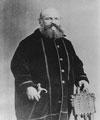 What is more absurd and more impious than to attribute the name of Lucifer to the devil, that is, to personified evil. The intellectual Lucifer is the spirit of intelligence and love; it is the paraclete, it is the Holy Spirit, while the physical Lucifer is the great agent of universal magnetism.
What is more absurd and more impious than to attribute the name of Lucifer to the devil, that is, to personified evil. The intellectual Lucifer is the spirit of intelligence and love; it is the paraclete, it is the Holy Spirit, while the physical Lucifer is the great agent of universal magnetism.
- Eliphas Levi
When The Mason learns that the Key to the warrior on the block is the proper application of the dynamo of living power, he has learned the Mystery of his Craft. The seething energies of Lucifer are in his hands and before he may step onward and upward, he must prove his ability to properly apply this energy.
- Manly P. Hall
Freemasonry is a fraternity within a fraternity - an outer organization concealing an inner brotherhood of the elect. Before it is possible to intelligently discuss the origin of the Craft, it is necessary to establish the existence of these two separate yet interdependent orders, the one visible and the other invisible.
The visible society is a splendid camaraderie of ‘free and accepted’ men enjoined to devote themselves to ethical, educational, fraternal, patriotic, and humanitarian concerns. The invisible society is a secret and most august fraternity whose members are dedicated to the service of a mysterious Arcanum Arcanorum. Those Brethren who have essayed to write the history of their Craft have not included in their disquisitions the story of that truly secret inner society which is to the body Freemasonic what the heart is to the body human. In each generation only a few are accepted into the inner sanctuary of the Work, but these are veritable Princes of the Truth and their sainted names shall be remembered in future ages together with the seers and prophets of the elder world. Though the great initiate-philosophers of Freemasonry can be counted upon one’s fingers, their power is not to be measured by the achievements of ordinary men. They are dwellers upon the Threshold of the Innermost, Masters of that secret doctrine which forms the invisible foundation of every great theological and rational institution.
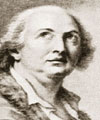
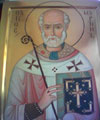
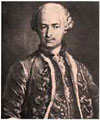 It is possible to trace Masonry back a few centuries with comparative ease, but then the thread suddenly vanishes from sight in a maze of secret societies and political enterprises. Dimly silhouetted in the mists that becloud these tangled issues are such figures as Cagliostro, Comte de St.-Germain, and St. Martin, but even the connection between these individuals and the Craft has never been clearly defined. The writings of early Masonic history is involved in such obvious hazard as to provoke the widespread conclusion that further search is futile. The average Masonic student is content, therefore, to trace his Craft back to the workmen’s guilds who chipped and chiseled the cathedrals and public buildings of medieval Europe. While such men as Albert Pike have realized this attitude to be ridiculous, it is one thing to declare it insufficient and quite another to prove the fallacy to an adamantine mind. So much has been lost and forgotten, so much ruled in and out by those unfit for such legislative revision that the modern rituals do not in every case represent the original rites of the Craft. In his Symbolism, Pike (who spent a lifetime in the quest for Masonic secrets) declares that few of the original meanings of the symbols are known to the modern order, nearly all the so-called interpretations now given being superficial. Pike confessed that the original meanings of the very symbols he himself was attempting to interpret were irretrievably lost; that even such familiar emblems as the apron and the pillars were locked mysteries, whose ‘keys’ had been thrown away by the uninformed.
It is possible to trace Masonry back a few centuries with comparative ease, but then the thread suddenly vanishes from sight in a maze of secret societies and political enterprises. Dimly silhouetted in the mists that becloud these tangled issues are such figures as Cagliostro, Comte de St.-Germain, and St. Martin, but even the connection between these individuals and the Craft has never been clearly defined. The writings of early Masonic history is involved in such obvious hazard as to provoke the widespread conclusion that further search is futile. The average Masonic student is content, therefore, to trace his Craft back to the workmen’s guilds who chipped and chiseled the cathedrals and public buildings of medieval Europe. While such men as Albert Pike have realized this attitude to be ridiculous, it is one thing to declare it insufficient and quite another to prove the fallacy to an adamantine mind. So much has been lost and forgotten, so much ruled in and out by those unfit for such legislative revision that the modern rituals do not in every case represent the original rites of the Craft. In his Symbolism, Pike (who spent a lifetime in the quest for Masonic secrets) declares that few of the original meanings of the symbols are known to the modern order, nearly all the so-called interpretations now given being superficial. Pike confessed that the original meanings of the very symbols he himself was attempting to interpret were irretrievably lost; that even such familiar emblems as the apron and the pillars were locked mysteries, whose ‘keys’ had been thrown away by the uninformed.
Preston, Gould, Mackey, Oliver, and Pike - in fact, nearly every great historian of Freemasonry - have all admitted the possibility of the modern society being connected, indirectly at least, with the ancient Mysteries, and their descriptions of the modern society are prefaced by excerpts from ancient writings descriptive of primitive ceremonials. These eminent Masonic scholars have all recognized in the legend of Hiram Abiff an adaptation of the Osiris myth; nor do they deny that the major part of the symbolism of the craft is derived from the pagan institutions of antiquity when the gods were venerated in secret places with strange figures and appropriate rituals. Though cognizant of the exalted origin of their order, these historians - either through fear or uncertainty - have failed, however, to drive home the one point necessary to establish the true purpose of Freemasonry; they did not realize that the Mysteries whose rituals Freemasonry perpetuates were the custodians of a secret philosophy of life of such transcendent nature that it can only be entrusted to an individual tested and proved beyond all peradventure of human frailty. The secret schools of Greece and Egypt were neither fraternal nor political fundamentally, nor were their ideals similar to those of the modern Craft. They were essentially philosophic and religious institutions, and all admitted into them were consecrated to the service of the sovereign good. Modern Freemasons, however, regard their Craft primarily as neither philosophic nor religious, but rather as ethical. Strange as it may seem, the majority openly ridicule the very supernatural powers and agencies for which their symbols stand.
[Osiris:] the greatest god of Egypt, the son of Seb (Saturn), celestial fire, and of Neith, primordial matter and infinite space. This shows him as the self-existent and self-created god, the first manifesting deity (our third Logos), identical with Ahura Mazda is one with, or synthesis of, the Amshaspends, so Osiris, the collective unit, when differentiated and personified, becomes Typhon, his brother, Isis and Nephtys his sisters, Horus his son and his other aspects. He was born at Mount Sinai, the Nyssa of the Old Testament, and buried at Abydos, after being killed by Typhon at the early age of twenty-eight, according to the allegory. According to Euripides he is the same as Zeus and Dionysos or Dio-Nysos ’thee god of Nysa’, for Osiris is said by him to have been brought up in Nysa, in Arabia ’the Happy’.
The secret doctrine that flows through Freemasonic symbols (and to whose perpetuation the invisible Masonic body is consecrated) has its source in three ancient and exalted orders. The first is the Dionysiac artificers, the second the Roman collegia, and the third the Arabian Rosicrucians. The Dionysians were the master builders of the ancient world. Originally founded to design and erect the theaters of Dionysos wherein were enacted the tragic dramas of the rituals, this order was repeatedly elevated by popular acclaim to greater dignity until at last it was entrusted with the planning and construction of all public edifices concerned with the commonwealth or the worship of the gods and heroes. Hiram, King of Tyre, was the patron of the Dionysians, who flourished in Tyre and Sidon, and Hiram Abiff (if we may believe the sacred account) was himself a Grand Master of this most noble order of pagan builders. King Solomon in his wisdom accepted the services of this famous craftsman, and thus at the instigation of Hiram, King of Tyre, Hiram Abiff, though himself a member of a different faith, journeyed from his own country to design and supervise the erection of the Everlasting House to the true God on Mount Moriah. The tools of the builders’ craft were first employed by the Dionysians as symbols under which to conceal the mysteries of the soul and the secrets of human regeneration. The Dionysians also first likened man to a rough ashlar which, trued into a finished block through the instrument of reason, could be fitted into the structure of that living and eternal Temple built without the sound of hammer, the voice of workmen or any tool of contention.
The navel is naturally placed in the centre of the human body, and, if in a man lying with his face upward, and his hands and feet extended, from his navel as the centre, a circle be described, it will touch his fingers and toes. It is not alone by a circle, that the human body is thus circumscribed, as may be seen by placing it within a square. For measuring from the feet to the crown of the head, and then across the arms fully extended, we find the latter measure equal to the former; so that lines at right angles to each other, enclosing the figure, will form a square.
- Vitruvius’ De Architectura
The Roman collegia was a branch of the Dionysiacs and to it belonged those initiated artisans who fashioned the impressive monuments whose ruins still lend their immortal glory to the Eternal City. In his Ten Books on Architecture, Vitruvius, the initiate of the collegia, has revealed that which was permissible concerning the secrets of his holy order. Of the inner mysteries, however, he could not write, for these were reserved for such as had donned the leather apron of the craft.
Into the stones they trued, the adepts of the collegia deeply carved their Gnostic symbols. From earliest times, the initiated stonecutters marked their perfected works with the secret emblems of their crafts and degrees that unborn generations might realize that the master builders of the first ages also labored for the same ends sought by men today.
The Mysteries of Egypt and Persia that had found a haven in the Arabian desert reached Europe by way of the Knights Templars and the Rosicrucians. The Temple of the Rose Cross at Damascus had preserved the secret philosophy of Sharon’s Rose; the Druses of Lebanon still retain the mysticism of ancient Syria; and the Dervishes, as they lean on their carved and crotched sticks, still meditate upon the secret instruction perpetuated from the days of the four Caliphs. From the far places of Iraq and the hidden retreats of the Sufi mystics, the Ancient Wisdom thus found its way into Europe.
The androgyne goat of Mendes. According to the Western, and especially the French Kabalists, the Templars were accused of worshipping Baphomet, and Jacques de Molay, the Grand Master of the Templars, with all his brother-Masons, suffered death in consequence. But esoterically, and philologically, the word never meant goat, nor even anything so objective as an idol. The term means according to Von Hammer, baptism or initiation into Wisdom, from the Greek words bafh and mhtiz and from the relation of Baphometus to Pan. Von Hammer must be right. It was a Hermetico Kabalistic symbol, but the whole story as invented by the Clergy was false
Was Jacques de Molay burned by the Holy Inquisition merely because he wore the red cross of the Templar? What were those secrets to which he was true even in death? Did his companion Knights perish with him merely because they had amassed a fortune and exercised an unusual degree of temporal power? To the thoughtless, these may constitute ample grounds, but to those who can pierce the film of the specious and the superficial, they are assuredly insufficient. It was not the physical power of the Templars but the knowledge which they had brought with them from the East that the church feared. The Templars had discovered part of the Great Arcanum; they had become wise in those mysteries which had been celebrated in Mecca thousands of years before the advent of Mohammed; they had read a few pages from the dread book of the Anthropos, and for this knowledge they were doomed to die. What was the black magic of which the Templars were accused? What was Baphomet, the Goat of Mendes, whose mysteries they were declared to have celebrated? All these are questions worthy of the thoughtful consideration of every studious Mason.
Truth is eternal. The so-called revelations of Truth that come in different religions are actually but a re-emphasis of an ever-existing doctrine…
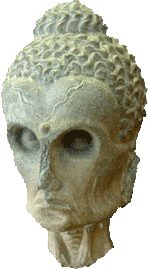 In his reformation of Indian philosophy, Gautama Buddha did not reject the esotericism of the Brahmins, but rather adapted this esotericism to the needs of the masses in India. The mystic secrets locked within the the holy Vedas were thus disclosed in order that all men, irrespective of castely distinction, might partake of wisdom and share in a common heritage of good.
In his reformation of Indian philosophy, Gautama Buddha did not reject the esotericism of the Brahmins, but rather adapted this esotericism to the needs of the masses in India. The mystic secrets locked within the the holy Vedas were thus disclosed in order that all men, irrespective of castely distinction, might partake of wisdom and share in a common heritage of good.
[Vedas:] The ‘revelation’. the scriptures of the Hindus, from the root vid, to know, or divine knowledge. They are the most ancient as well as the most sacred of the Sanskrit works. The Vedas on the date and antiquity of which no two Orientalists can agree, are claimed by the Hindus themselves, whose Brahmans and Pundits ought to know best about their own religious works, to have been first taught orally for thousands of years and then compiled on the shores of Lake Manasa-Sarovara (phonetically, Mansarovara) beyond the Himalayas, in Tibet. When was this done? While their religious teachers, such as Swami Dayanand Saraswati, claim for them an antiquity of many decades of ages, our modern Orientalists will grant them no greater antiquity in their present form than about between 1,000 and 2,000 B.C. As compiled in their final form by Veda-Vyasa, however, the Brahmans themselves unanimously assign 3,100 years before the Christian era, the date when Vyasa flourished. Therefore the Vedas must be as old as this date. But their antiquity is sufficiently proven by the fact that they are written in such an ancient form, of Sanskrit, so different from the Sanskrit now used, that there is no other, work like them in the literature of this eldest sister of all the known languages, as Prof. Max Muller calls it. Only the most learned of the Brahman Pundits can read the Vedas in their original.
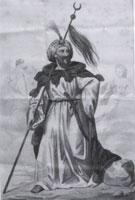 In his cavern on Mount Hira, Mohammed prayed not for new truths but for old truths to be restated in their original purity and simplicity in order that men might understand again that primitive religion: God’s clear revelation to the first patriarchs. The Mysteries of Islam had been celebrated in the great black cube of the Caaba centuries before the holy pilgrimage. The Prophet was but the reformer of a decadent pagandom, the smasher of idols, the purifier of defiled Mysteries. The dervishes, who patterned their garments after those of the prophet, still preserve that inner teaching of the elect, and for them the Axis of the Earth - the supreme hierophant - still sits, visible only to the faithful, in meditation upon the flat roof of the Caaba.
In his cavern on Mount Hira, Mohammed prayed not for new truths but for old truths to be restated in their original purity and simplicity in order that men might understand again that primitive religion: God’s clear revelation to the first patriarchs. The Mysteries of Islam had been celebrated in the great black cube of the Caaba centuries before the holy pilgrimage. The Prophet was but the reformer of a decadent pagandom, the smasher of idols, the purifier of defiled Mysteries. The dervishes, who patterned their garments after those of the prophet, still preserve that inner teaching of the elect, and for them the Axis of the Earth - the supreme hierophant - still sits, visible only to the faithful, in meditation upon the flat roof of the Caaba.
Father C.R.C., the Master of the Rose Cross, was initiated into the Great Work at Damcar. Later at Fez, further information was given him relating to the sorcery of the Arabians. From these wizards of the desert C. R. C. also secured the sacred book M, which is declared to have contained the accumulated knowledge of the world. This volume was translated into Latin by C. R. C. for the edification of his order, but only the initiates know the present hidden repository of the Rosicrucian manuscripts, charters, and manifestos. From the Arabians C. R. C. also learned of the elemental peoples and how, with their aid, it was possible to gain admission to the ethereal world where dwelt the genii and Nature spirits. C.R.C. thus discovered that the magical creatures of the Arabian Nights Entertainment actually existed, though invisible to the ordinary mortal. From astrologers living in the desert far from the concourse of the market-place he was further instructed concerning the mysteries of the stars, the virtues resident in the astral light, the rituals of magic and invocation, the preparation of therapeutic talismans, and the binding of the genii. C. R. C. became an adept in the gathering of medicinal herbs, the transmutation of metals, and the manufacture of precious gems by artificial means. Even the secret of the Elixer of Life and the Universal Panacea were communicated to him. Enriched thus beyond the dreams of Croesus, the Holy Master returned to Europe and there established a House of Wisdom which he called Domus Sancti Spiritus. This house he enveloped in clouds, it is said, so that men could not discover it. What are these ‘clouds’, however, but the rituals and symbols under which is concealed the Great Arcanum-that unspeakable mystery which every true Mason must seek if he would become in reality a ‘Prince of the Royal Secret’?
[Genii:] A name for Æons, or angels, with the Gnostics. The names of their hierarchies and classes are simply legion.
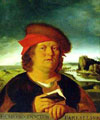 Paracelsus, the Swiss Hermes, was initiated into the secrets of alchemy in Constantinople and there beheld the consummation of the magnum opus. He is consequently entitled to be mentioned among those initiated by the Arabians in to the Rosicrucian work.
Paracelsus, the Swiss Hermes, was initiated into the secrets of alchemy in Constantinople and there beheld the consummation of the magnum opus. He is consequently entitled to be mentioned among those initiated by the Arabians in to the Rosicrucian work.
Hermes Trismegistus: the thrice great Hermes, the Egyptian. The mythical personage after whom the Hermetic philosophy was named. In Egypt the god Thoth or Thot. A generic name of many ancient Greek writers on philosophy and Alchemy. Hermes Trismegistus is the name of Hermes or Thoth in his human aspect, as a god he is far more than this. As Hermes-Thoth-Aah, he is Thoth, the moon, i.e., his symbol is the bright side of the moon, supposed to contain the essence of creative Wisdom, ’the elixir of Hermes’.
As such he is associated with the Cynocephalus, the god-headed monkey, for the same reason as was Anubis, one of the aspects of Thoth (Hermanubis). The same idea underlies the form of the Hindu god of wisdom, the elephant-headed Ganesa, or Ganpat, the son of Parvati and Siva. When he has the head of an ibis, he is the sacred scribe of the gods; but even then he wears the crown atef and the lunar disk. He is the most mysterious of gods. As a serpent, Hermes Thoth is the divine creative wisdom.
 Cagliostro was also initiated by the Arabians and, because of the knowledge he had thus secured, incurred the displeasure of the Holy See.
Cagliostro was also initiated by the Arabians and, because of the knowledge he had thus secured, incurred the displeasure of the Holy See.
 From the unprobed depths of Arabian Rosicrucianism also issued the illustrious Comte de St.-Germain, over whose Masonic activities to this day hangs the veil of impenetrable mystery. The exalted body of initiates whom he represented, as well as the mission he came to accomplish, have both been concealed from the members of the Craft at large and are apparent only to those few discerning Masons who sense the supernal philosophic destiny of their Fraternity.
From the unprobed depths of Arabian Rosicrucianism also issued the illustrious Comte de St.-Germain, over whose Masonic activities to this day hangs the veil of impenetrable mystery. The exalted body of initiates whom he represented, as well as the mission he came to accomplish, have both been concealed from the members of the Craft at large and are apparent only to those few discerning Masons who sense the supernal philosophic destiny of their Fraternity.
The modern Masonic order can be traced back to a period in European history famous for its intrigue both political and sociological. Between the years 1600 and 1800, mysterious agents moved across the face of the Continent. The forerunner of modern thought was beginning to make its appearance and all Europe was passing through the throes of internal dissension and reconstruction. Democracy was in its infancy, yet its potential power was already being felt. Thrones were beginning to totter. The aristocracy of Europe was like the old man on Sinbad’s back: it was becoming more unbearable with every passing day. Although upon the surface national governments were seemingly able to cope with the situation, there was a definite undercurrent of impending change; and out of the masses, long patient under the yoke of oppression, were rising up the champions of religious, philosophic, and political liberty. These led the factions of the dissatisfied: people with legitimate grievances against the intolerance of the church and the oppression of the crown. Out of this struggle for expression materialized certain definite ideals, the same which have now come to be considered peculiarly Masonic.
The divine prerogatives of humanity were being crushed out by the three great powers of ignorance, superstition, and fear - ignorance, the power of the mob; fear, the power of the despot; and superstition, the power of the church. Between the thinker and personal liberty loomed the three ‘ruffians’ or personifications of impediment-the torch, the crown, and the tiara. Brute force, kingly power, and ecclesiastical persuasion became the agents of a great oppression, the motive of a deep unrest, the deterrent to all progress. It was unlawful to think, well-nigh fatal to philosophize, rank heresy to doubt. To question the infallibilitY of the existing order was to invite the persecution of the church and the state. These together incited the populace, which thereupon played the role of executioner for these arch-enemies of human liberty. Thus the ideal of democracy assumed a definite form during these stormy periods of European history. This democracy was not only a vision but a retrospection, not only a looking forward but a gazing backward upon better days and the effort to project those better days into the unborn tomorrow. The ethical, political, and philosophical institutions of antiquity with their constructive effect upon the whole structure of the state were noble examples of possible conditions. It became the dream of the oppressed, consequently, to re-establish a golden age upon the earth, an age where the thinker could think in safety and the dreamer dream in peace; when the wise should lead and the simple follow, yet all dwell together in fraternity and industry.
During this period several books were in circulation which, to a certain degree, registered the pulse of the time. One of these - More’s Utopia was the picture of a new age when heavenly conditions should prevail upon the earth. This ideal of establishing good in the world savored of blasphemy, however, for in that day heaven alone it was assumed could be good. Men did not seek to establish heavenly conditions upon earth, but rather earthly conditions in heaven. According to popular concept, the more the individual suffered the torments of the damned upon earth, the more he would enjoy the blessedness of heaven. Life was a period of chastisement and earthly happiness an unattainable mirage. More’s Utopia thus came as a definite blow to autocratic pretensions and attitudes, giving impulse to the material emphasis which was to follow in succeeding centuries.
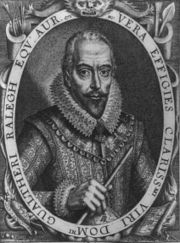 Another prominent figure of this period was Sir Walter Raleigh, who paid with his life for high treason against the crown. Raleigh was tried and, though the charge was never proved, was executed. Before Raleigh went to trial, it was known that he must die and that no defense could save him. His treason against the crown was of a character very different, however, from that which history records. Raleigh was a member of a secret society or body of men who were already moving irresistibly forward under the banner of democracy, and for that affiliation he died a felon’s death. The actual reason for Raleigh’s death sentence was his refusal to reveal the identity either of that great political organization of which he was a member or his confreres who were fighting the dogma of faith and the divine right of kings. On the title page of the first edition of Raleigh’s History of the World, we accordingly find a mass of intricate emblems framed between two great columns. When the executioner sealed his lips forever, Raleigh’s silence, while it added to the discomfiture of his persecutors, assured the safety of his colleagues.
Another prominent figure of this period was Sir Walter Raleigh, who paid with his life for high treason against the crown. Raleigh was tried and, though the charge was never proved, was executed. Before Raleigh went to trial, it was known that he must die and that no defense could save him. His treason against the crown was of a character very different, however, from that which history records. Raleigh was a member of a secret society or body of men who were already moving irresistibly forward under the banner of democracy, and for that affiliation he died a felon’s death. The actual reason for Raleigh’s death sentence was his refusal to reveal the identity either of that great political organization of which he was a member or his confreres who were fighting the dogma of faith and the divine right of kings. On the title page of the first edition of Raleigh’s History of the World, we accordingly find a mass of intricate emblems framed between two great columns. When the executioner sealed his lips forever, Raleigh’s silence, while it added to the discomfiture of his persecutors, assured the safety of his colleagues.
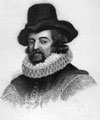 One of the truly great minds of that secret fraternity - in fact, the moving spirit of the whole enterprise - was Sir Francis Bacon, whose prophecy of the coming age forms the theme of his New Atlantis and whose vision of the reformation of knowledge finds expression in the Novum Organum Scientiarum, the new organ of science or thought. In the engraving at the beginning of the latter volume may be seen the little ship of progressivism sailing out between the Pillars of Galen and Avicenna, venturing forth beyond the imaginary pillars of church and state upon the unknown sea of human liberty. It is significant that Bacon was appointed by the British Crown to protect its interests in the new American Colonies beyond the sea. We find him writing of this new land, dreaming of the day when a new world and a new government of the philosophic elect should be established there, and scheming to consummate that end when the time should be ripe. Upon the title page of the 1640 edition of Bacon’s Advancement of Learning is a Latin motto to the effect that he was the third great mind since Plato. Bacon was a member of the same group to which Sir Walter Raleigh belonged, but Bacon’s position as Lord High Chancellor protected him from Raleigh’s fate. Every effort was made, however, to humiliate and discredit him. At last, in the sixty-sixth year of his life, having completed the work which held him in England, Bacon feigned death and passed over into Germany, there to guide the destinies of his philosophic and political fraternity for nearly twenty-five years before his actual demise.
One of the truly great minds of that secret fraternity - in fact, the moving spirit of the whole enterprise - was Sir Francis Bacon, whose prophecy of the coming age forms the theme of his New Atlantis and whose vision of the reformation of knowledge finds expression in the Novum Organum Scientiarum, the new organ of science or thought. In the engraving at the beginning of the latter volume may be seen the little ship of progressivism sailing out between the Pillars of Galen and Avicenna, venturing forth beyond the imaginary pillars of church and state upon the unknown sea of human liberty. It is significant that Bacon was appointed by the British Crown to protect its interests in the new American Colonies beyond the sea. We find him writing of this new land, dreaming of the day when a new world and a new government of the philosophic elect should be established there, and scheming to consummate that end when the time should be ripe. Upon the title page of the 1640 edition of Bacon’s Advancement of Learning is a Latin motto to the effect that he was the third great mind since Plato. Bacon was a member of the same group to which Sir Walter Raleigh belonged, but Bacon’s position as Lord High Chancellor protected him from Raleigh’s fate. Every effort was made, however, to humiliate and discredit him. At last, in the sixty-sixth year of his life, having completed the work which held him in England, Bacon feigned death and passed over into Germany, there to guide the destinies of his philosophic and political fraternity for nearly twenty-five years before his actual demise.
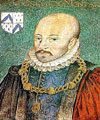
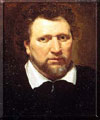
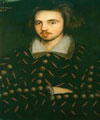
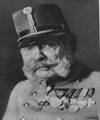
Other notable characters of the period are Montaigne, Ben Jonson, Marlowe, and the great Franz Joseph of Transylvania - the latter one of the most important as well as active figures in all this drama, a man who ceased fighting Austria to retire into a monastery in Transylvania from which to direct the activities of his secret society.
One political upheaval followed another, the grand climax of this political unrest culminating in the French Revolution, which was directly precipitated by the attacks upon the person of Alessandro Cagliostro. The ‘divine’ Cagliostro, by far the most picturesque character of the time, has the distinction of being more maligned than any other person of history. Tried by the Inquisition for founding a Masonic lodge in the city of Rome, Cagliostro was sentenced to die, a sentence later commuted by the Pope to life imprisonment in the old castle of San Leo. Shortly after his incarceration, Cagliostro disappeared and the story was circulated that he had been strangled in an attempt to escape from prison. In reality, however, he was liberated and returned to his Masters in the East.
Cagliostro founded the Egyptian Rite of Freemasonry, which received into its mysteries many of the French nobility and was regarded favorably by the most learned minds of Europe. Having established the Egyptian Rite, Cagliostro declared himself to be an agent of the order of the Knights Templars and to have received initiation from them on the Isle of Malta.
Called upon the carpet by the Supreme Council of France, it was demanded of Cagliostro that he prove by what authority he had founded a Masonic lodge in Paris independent of the Grand Orient. Of such surpassing mentality was Cagliostro that the Supreme Council found it difficult to secure an advocate qualified to discuss with Cagliostro philosophic Masonry and the ancient Mysteries he claimed to represent.
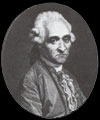 The Court de Gebelin - the greatest Egyptologist of his day and an authority on ancient philosophies - was chosen as the outstanding scholar. A time was set and the Brethren convened. Attired in an Oriental coat and a pair of violet-colored breeches, Cagliostro was haled before this council of his peers. The Court de Gebelin asked three questions and then sat down, admitting himself disqualified to interrogate a man so much his superior in every branch of learning. Cagliostro then took the floor, revealing to the assembled Masons not only his personal qualifications, but prophesying the future of France. He foretold the fall of the French throne, the Reign of Terror, and the fall of the Bastille. At a later time he revealed the dates of the death of Marie Antoinette and the King, and also the advent of Napoleon. Having finished his address, Cagliostro made a spectacular exit, leaving the French Masonic lodge in consternation and utterly incapable of coping with the profundity of his reasoning.
The Court de Gebelin - the greatest Egyptologist of his day and an authority on ancient philosophies - was chosen as the outstanding scholar. A time was set and the Brethren convened. Attired in an Oriental coat and a pair of violet-colored breeches, Cagliostro was haled before this council of his peers. The Court de Gebelin asked three questions and then sat down, admitting himself disqualified to interrogate a man so much his superior in every branch of learning. Cagliostro then took the floor, revealing to the assembled Masons not only his personal qualifications, but prophesying the future of France. He foretold the fall of the French throne, the Reign of Terror, and the fall of the Bastille. At a later time he revealed the dates of the death of Marie Antoinette and the King, and also the advent of Napoleon. Having finished his address, Cagliostro made a spectacular exit, leaving the French Masonic lodge in consternation and utterly incapable of coping with the profundity of his reasoning.
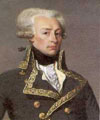
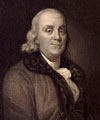 Then appears that charming ‘first American gentleman,’ Dr. Benjamin Franklin, who together with the Marquis de Lafayette, played an important role in this drama of empires. While in France, Dr. Franklin was privileged to receive definite esoteric instruction. It is noteworthy that Franklin was the first in America to reprint Anderson’s Constitutions of the Free-Masons, which is a most prized work on the subject, though its accuracy is disputed.
Then appears that charming ‘first American gentleman,’ Dr. Benjamin Franklin, who together with the Marquis de Lafayette, played an important role in this drama of empires. While in France, Dr. Franklin was privileged to receive definite esoteric instruction. It is noteworthy that Franklin was the first in America to reprint Anderson’s Constitutions of the Free-Masons, which is a most prized work on the subject, though its accuracy is disputed.
Through all this stormy period, these impressive figures come and go, part of a definite organization of political and religious thought - a functioning body of philosophers represented in Spain by no less an individual than Cervantes; in France by Cagliostro and St. Germain; in Germany by Gichtel and Andreae in England by Bacon, More, and Raleigh, and in America by Washington and Franklin. Coincident with the Baconian agitation in England, the Fama Fraternitatis and Confessio Fraternitatis appeared in Germany, both of these works being contributions to the establishment of a philosophic government upon the earth.
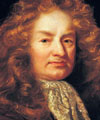 One of the outstanding links between the Rosicrucian Mysteries of the Middle Ages and modern Masonry is Elias Ashmole, the historian of the Order of the Garter and the first Englishman to compile the alchemical writings of the English chemists.
One of the outstanding links between the Rosicrucian Mysteries of the Middle Ages and modern Masonry is Elias Ashmole, the historian of the Order of the Garter and the first Englishman to compile the alchemical writings of the English chemists.
The foregoing may seem to be a useless recital of inanities, but its purpose is to impress upon the reader’s mind the philosophical and political situation in Europe at the time of the inception of the Masonic order. A philosophic clan, as it were, which had moved across the face of Europe under such names as the Illuminati and the Rosicrucians, had undermined in a subtle manner the entire structure of regal and sacerdotal supremacy. The founders of Freemasonry were all men who were more or less identified with the progressive tendencies of their day. Mystics, philosophers, and alchemists were all bound together with a secret tie and dedicated to the emancipation of humanity from ignorance and oppression. In my researches among ancient books and manuscripts, I have pieced together a little story of probabilities which has a direct bearing upon the subject. Long before the establishment of Freemasonry as a fraternity, a group of mystics founded in Europe what was called the ‘Society of Unknown Philosophers.’ Prominent among the profound thinkers who formed the membership of this society were the alchemists, who were engaged in transmuting the political and religious ‘base metal’ of Europe into ethical and spiritual ‘gold’; the Qabbalists who, as investigators of the superior orders of Nature, sought to discover a stable foundation for human government; and lastly the astrologers who, from a study of the procession of the heavenly bodies, hoped to find therein the rational archetype for all mundane procedure.
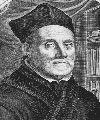 For some time, the Society of Unknown Philosophers moved extraneous to the church. Among the fathers of the church, however, were a great number of scholarly and intelligent men who were keenly interested in philosophy and ethics, prominent among them being the Jesuit Father, Athanasius Kircher, who is recognized as one of the great scholars of his day. Both a Rosicrucian and also a member of the Society of Unknown Philosophers, as revealed by the cryptograms in his writings, Kircher was in harmony with this program of philosophic reconstruction. Since learning was largely limited to churchmen, this body of philosophers soon developed an overwhelming preponderance of ecclesiastics in its membership. The original anti-ecclesiastical ideals of the society were thus speedily reduced to an innocuous state and the organization gradually converted into an actual auxiliary of the church. A small portion of the membership, however, ever maintained an aloofness from the literati of the faith, for it represented an unorthodox class - the alchemists, Rosicrucians, Qabbalists, and magicians. This latter group accordingly retired from the outer body of the society that had thus come to be known as the ‘Order of the Golden and Rose Cross’ and whose adepts were elevated to the dignity of Knights of the Golden Stone. Upon the withdrawal of these initiated adepts, a powerful clerical body remained which possessed considerable of the ancient lore but in many instances lacked the ‘keys’ by which this symbolism could be interpreted. As this body continued to increase in temporal power, its philosophical power grew correspondingly less.
For some time, the Society of Unknown Philosophers moved extraneous to the church. Among the fathers of the church, however, were a great number of scholarly and intelligent men who were keenly interested in philosophy and ethics, prominent among them being the Jesuit Father, Athanasius Kircher, who is recognized as one of the great scholars of his day. Both a Rosicrucian and also a member of the Society of Unknown Philosophers, as revealed by the cryptograms in his writings, Kircher was in harmony with this program of philosophic reconstruction. Since learning was largely limited to churchmen, this body of philosophers soon developed an overwhelming preponderance of ecclesiastics in its membership. The original anti-ecclesiastical ideals of the society were thus speedily reduced to an innocuous state and the organization gradually converted into an actual auxiliary of the church. A small portion of the membership, however, ever maintained an aloofness from the literati of the faith, for it represented an unorthodox class - the alchemists, Rosicrucians, Qabbalists, and magicians. This latter group accordingly retired from the outer body of the society that had thus come to be known as the ‘Order of the Golden and Rose Cross’ and whose adepts were elevated to the dignity of Knights of the Golden Stone. Upon the withdrawal of these initiated adepts, a powerful clerical body remained which possessed considerable of the ancient lore but in many instances lacked the ‘keys’ by which this symbolism could be interpreted. As this body continued to increase in temporal power, its philosophical power grew correspondingly less.
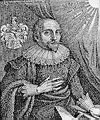
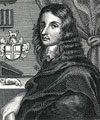
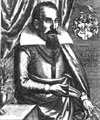
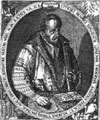
The smaller group of adepts that had withdrawn from the order remained inactive apparently, having retired to what they termed the ‘House of the Holy Spirit,’ where they were enveloped by certain "mists" impenetrable to the eyes of the profane. Among these reclusive adepts must be included such well-known Rosicrucians as Robert Fludd, Eugenius Philalethes, John Heydon, Michael Maier, and Henri Khunrath. These adepts in their retirement constituted a loosely organized society which, though lacking the solidarity of a definite fraternity, occasionally initiated a candidate and met annually at a specified place. It was the Comte de Chazal, an initiate of this order, who ‘raised’ Dr. Sigismund Bacstrom while the latter was on the Isle of Mauritius. In due time, the original members of the order passed on, after first entrusting their secrets to carefully chosen successors. In the meantime, a group of men in England, under the leadership of such mystics as Ashmole and Fludd, had resolved upon repopularizing the ancient learning and reclassifying philosophy in accordance with Bacon’s plan for a world encyclopedia. These men had undertaken to reconstruct ancient Platonic and Gnostic mysticism, but were unable to attain their objective for lack of information. Elias Ashmole may have been a member of the European order of Rosicrucians and as such evidently knew that in various parts of Europe there were isolated individuals who were in possession of the secret doctrine handed down in unbroken line from the ancient Greeks and Egyptians through Boetius, the early Christian Church, and the Arabians.
The efforts of the English group to contact such individuals were evidently successful. Several initiated Rosicrucians were brought from the mainland to England, where they remained for a considerable time designing the symbolism of Freemasonry and incorporating into the rituals of the order the same divine principles and philosophy that had formed the inner doctrine of all great secret societies from the time of the Eleusinia in Greece. In fact, the Eleusinian Mysteries themselves continued in Christendom until the sixth century after Christ, after which they passed into the custody of the Arabians, as attested by the presence of Masonic symbols and figures upon early Mohammedan monuments. The adepts brought over from the Continent to sit in council with the English philosophers were initiates of the Arabian rites and thus through them the Mysteries were ultimately returned to Christendom. Upon completion of the by-laws of the new fraternity, the initiates retired again into Central Europe, leaving a group of disciples to develop the outer organization, which was to function as a sort of screen to conceal the activities of the esoteric order.
Such, in brief, is the story to be pieced together from the fragmentary bits of evidence available. The whole structure of Freemasonry is founded upon the activities of this secret society of Central European adepts; whom the studious Mason will find to be the definite ’link’ between the modern Craft and the Ancient Wisdom. The outer body of Masonic philosophy was merely the veil of this qabbalistic order whose members were the custodians of the true Arcanum. Does this inner and secret brotherhood of initiates still exist independent of the Freemasonic order? Evidence points to the fact that it does, for these august adepts are the actual preservers of those secret operative processes of the Greeks whereby the illumination and completion of the individual is effected. They are the veritable guardians of the ‘Lost Word’ - the Keepers of the inner Mystery - and the Mason who searches for and discovers them is rewarded beyond all mortal estimation.
Of all obstacles to surmount in matters of rationality, the most difficult is that of prejudice. Even the casual observer must realize that the true wealth of Freemasonry lies in its mysticism. The average Masonic scholar, however, is fundamentally opposed to a mystical interpretation of his symbols, for he shares the attitude of the modern mind in its general antipathy towards transcendentalism. A most significant fact, however, is that those Masons who have won signal honors for their contributions to the Craft have been transcendentalists almost without exception. It is quite incredible, moreover, that any initiated Brother, when presented with a copy of Morals and Dogma upon the conferment of his fourteenth degree, can read that volume and yet maintain that his order is not identical with the Mystery Schools of the first ages. Much of the writings of Albert Pike are extracted from the books of the French magician, Eliphas Levi, one of the greatest transcendentalists of modern times. Levi was an occultist, a metaphysician, a Platonic philosopher, who by the rituals of magic invoked even the spirit of Apollonius of Tyana, and yet Pike has inserted in his Morals and Dogma whole pages, and even chapters, practically verbatim. To Pike the following remarkable tribute was paid by Stirling Kerr, Jr., 33rd degree Deputy for the Inspector-General for the District of Columbia, upon crowning with laurel the bust of Pike in the House of the Temple: “Pike was an oracle greater than that of Delphi. He was Truth’s minister and priest. His victories were those of peace. Long may his memory live in the hearts of the Brethren.” Affectionately termed ’Albertus Magnus’ by his admirers, Pike wrote of Hermeticism and alchemy and hinted at the Mysteries of the Temple. Through his zeal and unflagging energy, American Freemasonry was raised from comparative obscurity to become the most powerful organization in the land. Though Pike, a transcendental thinker, was the recipient of every honor that the Freemasonic bodies of the world could confer, the modern Mason is loath to admit that transcendentalism has any place in Freemasonry. This is an attitude filled with embarrassment and inconsistency, for whichever way the Mason turns he is confronted by these inescapable issues of philosophy and the Mysteries. Yet withal he dismisses the entire subject as being more or less a survival of primitive superstitions.
The Mason who would discover the Lost Word must remember, however, that in the first ages - very neophyte was a man of profound learning and unimpeachable character, who for the sake of wisdom and virtue had faced death unafraid and had triumphed over those limitations of the flesh which bind most mortals to the sphere of mediocrity. In those days the rituals were not put on by degree teams who handled candidates as though they were perishable commodities, but by priests deeply versed in the lore of their cults. Not one Freemason out of a thousand could have survived the initiations of the pagan rites, for the tests were given in those strenuous days when men were men and death the reward of failure. The neophyte of the Druid Mysteries was set adrift in a small boat to battle with the stormy sea, and unless his knowledge of natural law enabled him to quell the storm as did Jesus upon the Sea of Galilee, he returned no more. In the Egyptian rites of Serapis, it was required of the neophyte that he cross an unbridged chasm in the temple floor. In other words, if unable by magic to sustain himself in the air without visible support, he fell headlong into a volcanic crevice, there to die of heat and suffocation. In one part of the Mithraic rites, the candidate seeking admission to the inner sanctuary was required to pass through a closed door by dematerialization. The philosopher who has authenticated the reality of ordeals such as these no longer entertains the popular error that the performance of ‘miracles’ is confined solely to Biblical characters. “Do you still ask,” writes Pike, “If it has its secrets and mysteries? It is certain that something in the Ancient Initiations was regarded as of immense value, by such Intellects as Herodotus, Plutarch and Cicero. The Magicians of Egypt were able to imitate several of the miracles wrought by Moses; and the Science of the Hierophants of the mysteries produced effects that to the Initiated seemed Mysterious and supernatural.”
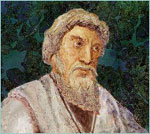 It becomes self-evident that he who passed successfully through these arduous tests involving both natural and also supernatural hazards was a man apart in his community. Such an initiate was deemed to be more than human, for he had achieved where countless ordinary mortals, having failed, had returned no more. Let us hear the words of Apuleius when admitted into the Temple of Isis, as recorded in The Metamorphosis, or The Golden Ass:
It becomes self-evident that he who passed successfully through these arduous tests involving both natural and also supernatural hazards was a man apart in his community. Such an initiate was deemed to be more than human, for he had achieved where countless ordinary mortals, having failed, had returned no more. Let us hear the words of Apuleius when admitted into the Temple of Isis, as recorded in The Metamorphosis, or The Golden Ass:
Then also the priest, all the profane being removed, taking hold of me by the hand, brought me to the penetralia of the temple, clothed in a new linen garment. Perhaps, inquisitive reader, you will very anxiously ask me what was then said and done? I would tell you, if it could be lawfully told; you should know it, if it was lawful for you to hear it. But both ears and the tongue are guilty of rash curiosity. Nevertheless, I will not keep you in suspense with religious desire, nor torment you with long-continued anxiety. Hear, therefore, but believe what is true. I approached to the confines of death, and having trod on the threshold of Proserpine, I returned from it, being carried through all the elements. At midnight I saw the sun shining with a splendid light; and I manifestly drew near to the Gods beneath, and the Gods above, and proximately adored them. Behold, I have narrated to you things, of which, though heard, it is nevertheless necessary that you should be ignorant. I will, therefore, only relate that which may be enunciated to the understanding of the profane without a crime.
Kings and princes paid homage to the initiate - the ’newborn’ man, the favorite of the gods. The initiate had actually entered into the presence of the divine beings. He had ‘died’ and been ‘raised’ again into the radiant sphere of everlasting light. Seekers after wisdom journeyed across great continents to hear his words and his sayings were treasured with the revelations of oracles. It was even esteemed an honor to receive from such a one an inclination of the head, a kindly smile or a gesture of approbation. Disciples gladly paid with their lives for the Master’s word of praise and died of a broken heart at his rebuke. On one occasion, Pythagoras became momentarily irritated because of the seeming stupidity of one of his students. The Master’s displeasure so preyed upon the mind of the humiliated youth that, drawing a knife from the folds of his garment, he committed suicide. So greatly moved was Pythagoras by the incident that never from that time on was he known to lose patience with any of his followers regardless of the provocation.
With a smile of paternal indulgence the venerable Master, who senses the true dignity of the mystic tie, should gravely incline the minds of the Brethren towards the sublimer issues of the Craft. The officer who would serve his lodge most effectively must realize that he is of an order apart from other men, that he is the keeper of an awful secret, that the chair upon which he sits is the seat of immortals, and that if he would be a worthy successor to those Master Masons of other ages, his thoughts must be measured by the profundity of Pythagoras and the lucidity of Plato. Enthroned in the radiant East, the Worshipful Master is the ‘Light’ of his lodge - the representative of the gods, one of that long line of hierophants who, through the blending of their rational powers with the reason of the Ineffable, have been accepted into the Great School. This high priest after an ancient order must realize that those before him are not merely a gathering of properly tested men, but the custodians of an eternal lore, the guardians of a sacred truth, the perpetuators of an ageless wisdom, the consecrated servants of a living god, the wardens of a Supreme Mystery.
The Hashishin
During the middle of the 12th century, a secretive hashish-smoking Shi’ite Muslim sect in Syria staked its claim to the Islamic Empire with such calculated and ruthless violence that its name is now synonymous with expedient murder. It established a system of underground cells and created a branching pyramid system of agents and spies throughout the Muslim world with a command structure that would be copied by all subsequent secret societies; they were called the Assassins.
At first they were called the Nizariyah in their attempt to restore Prince Nizar al-Tayyib to the Caliphship of Egypt, whom they proclaimed as the miraculous reincarnation of Isma’il. When this failed they set up a new cycle of Nizariyah imams, which they decided (conveniently) would distinguish themselves from previous imams by actually breaking the established laws of the shari’ah (the sacred law, as opposed to Islamic jurisprudence, prescribed by Allah) in preparation for the arrival of al-Mahdi (the apocalyptic ‘chosen one’).
This meant the Nizariyah imams could grant themselves license to drink wine and smoke large quantities of hashish and even to kill other Muslims in the pursuit of jihad (the holy struggle of Muslims). It wasn’t long before they were denounced by orthodox authorities as apostates and became marked men.
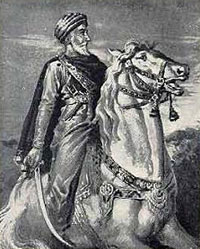 The Nizariyah moved from Egypt into Syria, where they became known as the Hashishin (Assassins) - the Arabic plural for hashish smokes, although some commentators have suggested that ‘guardians [of the secrets]’ is the true origin of the word. Under the leadership of Hassan-i-Sabah they conducted a vicious guerilla war and mounted attacks on Baghdad from their fortress headquarters in the Alamut valley in northern Persia to try to overthrow the Sunni rulers.
The Nizariyah moved from Egypt into Syria, where they became known as the Hashishin (Assassins) - the Arabic plural for hashish smokes, although some commentators have suggested that ‘guardians [of the secrets]’ is the true origin of the word. Under the leadership of Hassan-i-Sabah they conducted a vicious guerilla war and mounted attacks on Baghdad from their fortress headquarters in the Alamut valley in northern Persia to try to overthrow the Sunni rulers.
In The History of the Assassins, Amin Maalouf describes Hassan as “A man of immense culture, a devotee of poetry profoundly interested in the latest advances of science.” He drew heavily on the organization and techniques of the Dar ul Hikmat (House of Knowledge), or Grand Lodge of Cairo, when he developed his methods. For more than two centuries the Assassins perfected techniques of murder, weaponry, poisoning, and covert operations that made them the scourge of the Eastern world. Their Alamut fortress has entered into Persian legend as a sumptuous earthly paradise which Marco Polo described after passing that way in 1271:
In a beautiful valley, enclosed between two lofty mountains, [Hassan] had formed a luxurious garden stored with every delicious fruit and every fragrant shrub that could be procured. Palaces of various sizes and forms were erected in different parts of the grounds, ornamented with works of gold, with paintings and with furniture of rich silks. By means of small conduits contained in these buildings, streams of wine, milk, honey and some of pure water were seen to flow in every direction. The inhabitants of these places were elegant and beautiful damsels, accomplished in the arts of singing, playing upon all sorts of musical instruments, dancing, and especially those of dalliance and amorous allurement. In order that none without his license should find their way into this delicious valley, he caused a strong and inexpungible castle to be erected at the opening to it, through which the entry was by a secret passage.
Hassan was said to recruit local youths by drugging them and then transporting them to the valley where, after receiving a glimpse of paradise, they would be thrust back to reality, which would now appear so mundane by comparison that they would willingly join his cause and be prepared to die for the chance of returning to the garden of arcane delights. Once Hassan had recruited his new apprentices, they would then be brainwashed with trucks and drugs into mindless acceptance of his unique personality cult whose motto was ‘Nothing is forbidden, everything is permitted.’
One such illusion, described in Abdel-Rahman’s ancient Art of Imposture, involved burying a disciple up to his neck, which would then be daubed with blood; this apparently dismembered head would then describe the delights of paradise to the initiates. Afterward the unfortunate disciple would secretly be beheaded and placed on public view to complete the trickery.
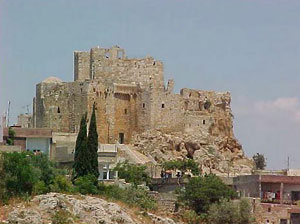 According to Arkon Daraul in A History of Secret Societies, there were three degrees of followers:
According to Arkon Daraul in A History of Secret Societies, there were three degrees of followers:
Missionaries (Dayes), Friends (Rafiq) who were disciples, and Fidavis, devotees. The last group…were the trained killers. Fidavis wore white, with a girdle, cap or boots of red. In addition to careful coaching in where and when to place the dagger in the victim’s bosom, they were trained in such things as languages, the dress and manners of monks, merchants and soldiers, any of whom they were ready to impersonate in carrying out their missions.
An Assassin would be instructed to perform a killing with the words: “Where do you come from?” He would reply, “From Paradise,” then receive his instructions: “Go then and slay a man I shall name. When you return you shall again dwell in Paradise. Fear not death because the angels of Allah will transport you nevertheless to Paradise.”
The Assassins’ influence spread throughout Persia and Iraq until the middle of the 13th century when the sect gradually imploded after Hassan was murdered by his son, Mohammed, who was in turn dispatched by his own son. The Alamut fortress was captured by the Mongols in 1256, marking the beginning of the end of the Assassins as a cohesive military force until the early 16th century when the Ottomans destroyed their last strongholds in Syria. However, the dynasty of Nizari Isma’ilite Imams has constituted in modern branches of Islam through the Aga Khan, although modern Isma’ilites have dropped the title ‘Assassins’ and most accept the Qur’an’s message of tolerance.
The Templar Knights
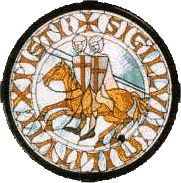 From their formation in 1118 with nine knights, this highly secretive order grew so rich and powerful over the course of the next two centuries that their wealth and land were second only to the Vatican. Most controversially, they may have been in possession of religious or technological secrets that superseded the authority of the papacy. For these reasons they were crushed in 1307 by the pope and the French king. But during their ascendancy they became the forerunners of modern bankers and even invented the credit system.
From their formation in 1118 with nine knights, this highly secretive order grew so rich and powerful over the course of the next two centuries that their wealth and land were second only to the Vatican. Most controversially, they may have been in possession of religious or technological secrets that superseded the authority of the papacy. For these reasons they were crushed in 1307 by the pope and the French king. But during their ascendancy they became the forerunners of modern bankers and even invented the credit system.
Their tale begins in Jerusalem in 1118 when nine French knights gained permission from Jerusalem’s King Baldwin II of Le Bourg to form a military order. Baldwin allowed them to live in the east wing of his palace, next to the ancient site where King Solomon’s temple had once stood.
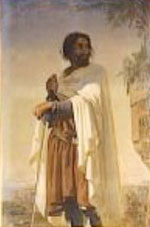 They were known as the Order of the Poor Knights of Christ and the Temple of Solomon. Their leader was a French nobleman called Hugh de Payens - and they had close ties to the Cistercian monks, whose fortunes grew parallel with them. Ostensibly they formed to protect pilgrims journeying to the Holy Land. In practice their mission was entirely different.
They were known as the Order of the Poor Knights of Christ and the Temple of Solomon. Their leader was a French nobleman called Hugh de Payens - and they had close ties to the Cistercian monks, whose fortunes grew parallel with them. Ostensibly they formed to protect pilgrims journeying to the Holy Land. In practice their mission was entirely different.
They began excavating the site where Solomon’s Temple once stood. Built 3,000 years ago, it was believed to have housed the Ark of the Covenant, the Hebrew’s most sacred relic, said to be the portal through which they communicated directly with God. The temple was also thought to contain hidden knowledge older and more powerful than the Gospels. It is certain that the Templars built a system of underground passageways on the site - they were discovered by the British Royal Engineers at the end of the 19th century. What is less certain is the extent of the Templars’ discoveries.
It is unlikely that they found the Ark, as they would have returned to France triumphant, but it is very likely that they discovered powerful secrets (sacred geometry) and scrolls about the life of Jesus that predate the Gospels and challenge orthodox views about the crucifixion and resurrection.
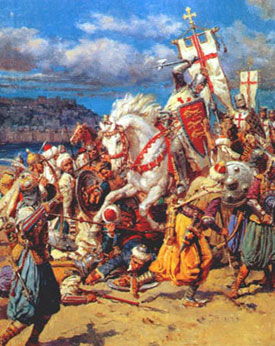 The Templars had a hierarchal structure (copied from the Cistercians and later adopted by the Freemasons) that consisted of knights, sergeants, chaplains and servants. Originally the order required the vows of chastity and poverty. Anyone joining had to renounce his possessions and hand them over to the order. The Templars’ power, wealth and prestige increased rapidly. At their height they had 20,000 knights and a fearsome fighting reputation. They were easily recognizable in their white surcoats bearing a red cross.
The Templars had a hierarchal structure (copied from the Cistercians and later adopted by the Freemasons) that consisted of knights, sergeants, chaplains and servants. Originally the order required the vows of chastity and poverty. Anyone joining had to renounce his possessions and hand them over to the order. The Templars’ power, wealth and prestige increased rapidly. At their height they had 20,000 knights and a fearsome fighting reputation. They were easily recognizable in their white surcoats bearing a red cross.
In 1128 at the Council of Troyes, they were recognized by the Catholic Church as an official military and religious order. Within a year they owned land throughout Europe, and in 1131 the King of Aragon gave them a third of his land. In 1139 Pope Innocent II granted them the right to answer only to the papacy, and they were also exempt from paying taxes, although they collected taxes for the church and the crown. They were also allowed to build their own churches. Thus they became the driving force behind some of the great medieval European churches, most notable Chartres Cathedral Paris.
The Templars, like all other secret orders and associations, had two doctrines, one concealed and reserved for the masters, which was Johannism; the other public, which was Roman Catholic.
The Templars were gravely accused of spitting upon Christ and denying God at their receptions, of gross obscenities, conversations with female devils, and the worship of a monstrous idol. ‘The end of the drama is well known, and how Jacques de Molai and his fellows perished in the flames. But before his execution, the Chief of the doomed Order organized and instituted what afterward came to be called the Occult, Hermetic, or Scottish Masonry. In the gloom of his prison, the Grand Master created four Metropolitan Lodges, at Naples for the East, at Edinburg for the West, at Stockholm for the North, and at Paris for the South.’ [The initials of his name, J\ B\ M\ found in the same order in the first three Degrees, are but one of the many internal and cogent proofs that such was the origin of modern FreeMasonry. The legend of Osiris was revived and adopted, to symbolize the destruction of the Order, and the resurrection of Khürüm, slain in the body of the Temple, of KHÜRÜM ABAI, the Master, as the martyr of fidelity to obligation, of Truth and Conscience, prophesied the restoration to life of the buried association.]
By spreading their influence and property, they became Europe’s first bankers, in some cases charging up to 60% interest. They devised a credit arrangement whereby a pilgrim or merchant could deposit money or goods with them at one location in exchange for a promissory note, which he could cash in when he reached his destination. These early travelers’ checks were an effective safeguard against tolls, church alms collectors and thieves.
Graham Hancock is convinced that the Templars had “unearthed on the Temple Mount some repository of ancient knowledge concerning the science of building.” This corresponds to a discovery made in 1947 on the shore of the Dead Sea. A ‘Copper Scroll’ was found along with the Dead Sea Scrolls that mentions not only a horde of treasure - gold and writings - but also its location: Solomon’s Temple. The idea of sacred geometry has often been thought of as the cornerstone of knowledge (and power) for secret mystery schools at a time when science, religion and magic were inseparable. Scientists today are no different from the ancient seekers and keepers of knowledge in that they search to reveal the hidden order to understand the mathematical relationships and harmonies that underlie the whole universe.
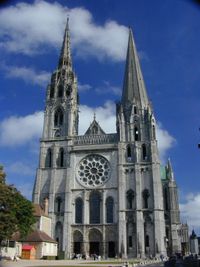 It is likely that the Templar’s knowledge of sacred geometry accounts for why Cartres Cathedral was so vastly superior in design and technology to anything that had come before - pointed arches and high vaulted ceilings appeared for the first time - early Gothic architecture had arrived. Even the properties of the stained glass has never been successfully replicated by modern chemists.
It is likely that the Templar’s knowledge of sacred geometry accounts for why Cartres Cathedral was so vastly superior in design and technology to anything that had come before - pointed arches and high vaulted ceilings appeared for the first time - early Gothic architecture had arrived. Even the properties of the stained glass has never been successfully replicated by modern chemists.
The Templars’ achievements are plain to see, but it was their mania for secrecy that led detractors to believe that the Order of the Temple hid some dark secret. Their downfall was instigated in 1305 by France’s King Philip IV, who convinced Pope Clement V that they were a threat to the papacy. It was also rumored that the Templars intended to restore the Merovingian bloodline to the French throne. The Merovingians claimed descent from Jesus and that they were living proof that Jesus did not die on the cross.
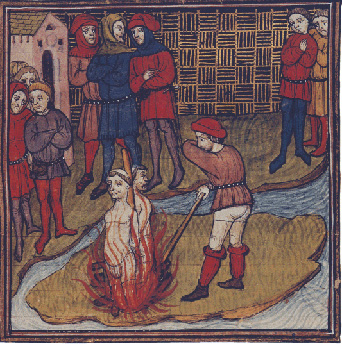
On Friday October 13, 1307, French authorities began capturing, interrogating, torturing and burning Templars as heretics and blasphemers. As a climax to this inquisition, the last Grand Master, Jacques de Molay, was roasted to death in Paris in 1314. It marked the public end of a proud and secretive order.
But many questions still need answering. Much of the Templar’s vast wealth remains unaccounted for, as does the Templar fleet - one of the largest of all time. Some researchers believe that it was the Templar treasure that Bérenger Saunière discovered under the hilltop church of St. Mary Magdalene’s in Rennes-le-Château.
Many of the Templars lived on - in fact only a small number were killed. Many escaped; some were even thought to have been pardoned by the Pope. They went underground, prompting claims that the Templars not only continued in secret, but that they survive to this day.